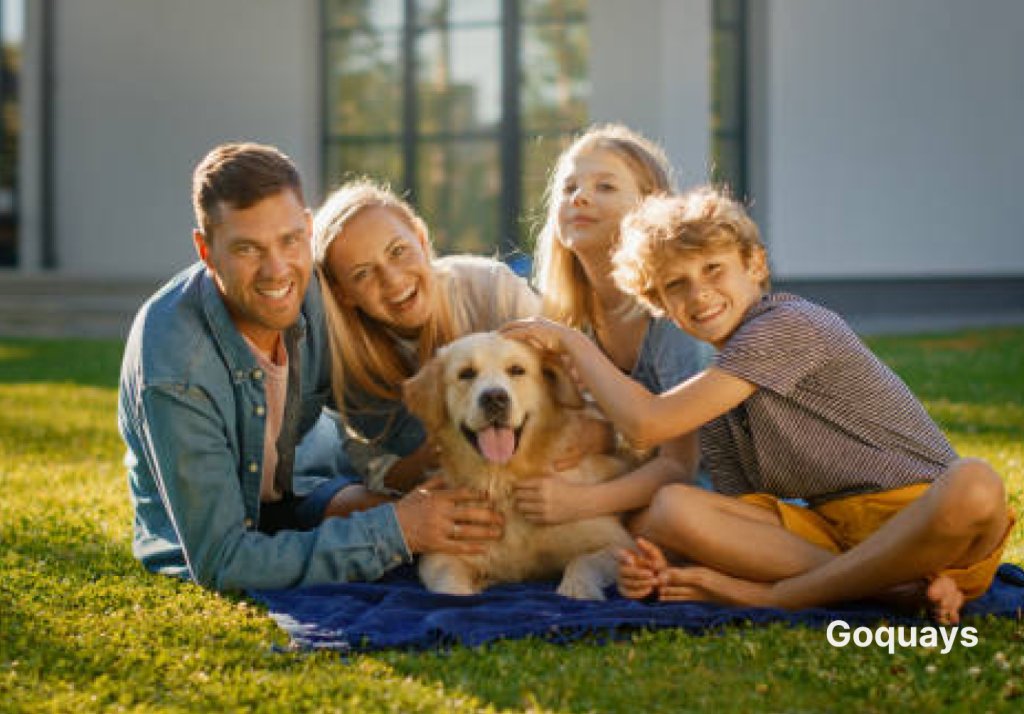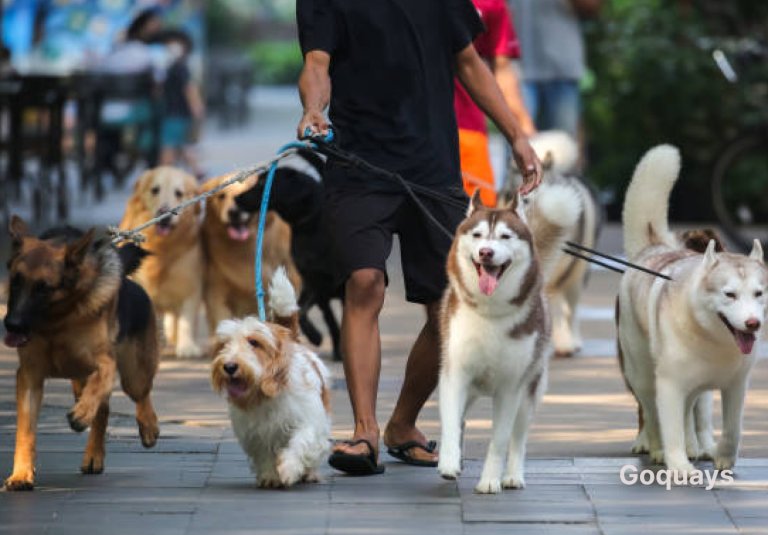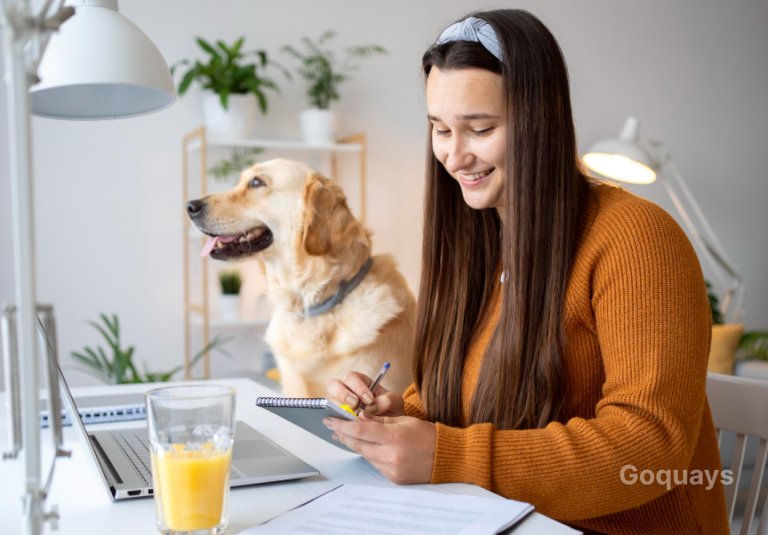Being a dog walker might seem easy at first. Just grab the leash, step outside, and enjoy a stroll with a furry friend. But once you’ve walked a few different dogs, you realise it’s much more than a casual walk. You’re stepping into a trusted role. You’re responsible for a dog’s safety, happiness, and wellbeing while their owner is away.
In the UK, the pet care market was valued at over £7 billion in 2024. Dog walkers play a big role in that. More pet owners now hire walkers to ensure their dogs get enough exercise and mental stimulation, especially in busy cities.
Every walk is different. Some dogs pull like they’re chasing a squirrel. Others stop dead at the sound of a bus. Some want to sniff every tree or greet every dog. Others prefer a quiet walk with no surprises. You might already love dogs, but being a great dog walker takes more than that. You need to know what to pack, how to introduce yourself to each dog, when to lead and when to follow. You also need to know how to spot trouble before it starts.
Dog behaviour expert Turid Rugaas said, “Understanding your dog’s language is the beginning of a strong relationship.” This is true for walkers too. Good walkers read the dog’s mood and respond calmly. They adjust routes to avoid fear triggers and never force a scared dog to move forward.
This guide offers tips to help you become a better dog walker. With the right skills, mindset, and tools, you’ll build trust with both dogs and their owners. That’s what makes all the difference.
10 Tips to Become a Good Dog Walker

- Start with a Friendly Introduction
Meet the dog and owner before the first walk. This helps build trust and lets you understand the dog’s habits and energy. - Prep Like a Pro
Plan your route, check the weather, and pack essentials like water, poo bags, and a towel. Make sure the area is safe. - Set the Pace and Stay in Control
Walk with confidence and keep a steady pace. Use a secure lead and stay alert. Avoid letting the dog pull or wander. - Use Treats Smartly
Treats help with bonding and training. Only use them when needed, and always check for allergies or dietary restrictions. - Check for Creepy Crawlies
After grassy or wooded walks, inspect the dog’s coat for ticks or burrs, especially around the ears, belly, and paws. - Stay Calm and Handle Gently
Some dogs are nervous around strangers. Stay relaxed, move slowly, and avoid yanking the lead if the dog reacts or pulls. - Network with Other Walkers
Join dog walking groups online or locally. You’ll learn tips, gain referrals, and grow your confidence through shared experience. - Keep the Pack Small
If walking multiple dogs, make sure they get along and match in size and energy. Too many can cause stress and tangles. - Travel Safely with Dogs
Use crates or harnesses when transporting dogs. Keep the car cool, never leave them inside alone, and have emergency contacts handy.
10. Watch for Signals
Learn to read dog body language. Signs like stiff posture or lip licking can show stress. Always adjust to keep the dog happy.
How to Walk Dogs Responsibly
A good dog walker does more than just walk. You respect people, pets, and the environment around you. Here’s how to stay professional and responsible.
- Stay Informed and Trained
Take a short dog behaviour or pet first aid course. Understanding how dogs think and respond can make a huge difference. It builds trust with both pets and their owners.
- Be Careful Near Farm Animals
If you walk dogs in the countryside, stay alert near livestock. Always use a lead and avoid fields with cattle or sheep. Sudden chases can cause serious harm and even lead to legal problems.
- Leave Nature Undisturbed
Stick to footpaths and don’t let dogs chase birds or other wildlife. Respect nature and protect the habitats you pass through. A dog walker who follows these rules earns respect from locals.
- Mind Other People
Not everyone is comfortable around dogs. Step aside for cyclists or children. Control barking or jumping. Be the kind of walker people feel safe around.
- Clean Up Without Fail
Always pick up after the dog. Bring more bags than you think you’ll need. Don’t leave waste behind, it damages your reputation and the environment.
- Keep Training Going
Use the walks as a chance to practice commands like “sit” or “wait.” Regular practice builds discipline and makes the walk smoother. It’s also a great bonding time.
How to Handle Difficult Dogs as a Dog Walker

Every dog walker will face a difficult dog at some point. Whether it’s a dog that pulls hard, barks at strangers, or refuses to move, staying calm is key. You need to be confident, not aggressive. Dogs pick up on your energy, so the calmer you are, the better the outcome.
Start by getting to know the dog before the walk. Ask the owner about any triggers or fears. Is the dog reactive to other animals? Does it hate skateboards or loud trucks? Understanding this helps you plan your route and avoid stressful situations.
If the dog is leash-reactive, keep your distance from other dogs. Cross the street if needed. Use a short but gentle lead for better control and avoid retractable ones, which can give you less leverage. If pulling is the issue, try a no-pull harness or head collar. These give you more control without hurting the dog.
Always reward good behaviour. Treats and praise go a long way, especially with nervous dogs. Stay away from punishment. It doesn’t solve the problem and can damage trust. If the dog lunges or freezes, stop, breathe, and wait. Forcing movement can make things worse.
Practice basic commands like “sit” and “stay” if the dog knows them. These commands offer control when distractions appear. If things get too tough, don’t be afraid to say no. Not every dog is a good fit.
With patience, the right tools, and an understanding of body language, you can handle most dogs safely. As dog trainer Victoria Stilwell says, “The best dog trainers don’t use force. They use knowledge, empathy, and patience.” If a dog’s behaviour feels dangerous, let the owner know. Your safety always comes first.
Must-Have Tools for Every Dog Walker

Being a dog walker means being prepared for anything. The right tools can make your walk smoother, safer, and more enjoyable for both you and the dog.
Start with a sturdy lead and a well-fitted harness. Collars can slip off or put pressure on the dog’s neck, especially if they pull. A harness offers better control and comfort. Always carry spare leads in case one breaks.
Poo bags are a must so bring extra in case of multiple dogs or unexpected messes. A treat pouch filled with owner-approved snacks helps with recall and rewarding good behaviour. Don’t forget a portable water bottle and collapsible bowl, especially on hot days.
You’ll also want a towel for muddy paws or unexpected rain. A basic first aid kit with antiseptic wipes, tweezers, and bandages is handy for minor injuries. For dogs prone to overheating, cooling towels or mats can be lifesavers during summer walks.
Keep your phone charged and with you. It’s your connection to the owner, a map, and a lifeline in emergencies. Having the owner’s contact and vet info saved is also essential.
Some dog walkers use a waist lead or hands-free belt, which helps manage energetic dogs. Others carry a clicker for training reinforcement. And if you’re walking at dusk or dawn, wear reflective gear and use a light-up collar or leash for the dog.
Lastly, consider weather-specific gear such as raincoats for rainy days or paw balm for snowy sidewalks. Being well-equipped shows clients that you’re professional, reliable, and ready for anything.
Legal and Safety Tips for Every Dog Walker

As a dog walker, your job isn’t just about walking dogs, it’s also about keeping them safe and staying on the right side of the law. Here’s what you need to know.
First, have dog walking insurance. It protects you in case a dog causes injury, gets lost, or damages property. It also builds trust with clients who want their pets in safe hands. Some local councils also require permits or registration for professional dog walkers, especially in parks or public spaces.
Stick to the legal dog limit in your area. Walking too many dogs can be dangerous and is often against the rules. Make sure each dog wears a collar with an ID tag that includes the owner’s name and contact info.
Always follow leash laws. Some places allow off-lead walks, but only if your dog has reliable recall. Otherwise, keep them on a lead. Don’t use retractable leads in busy areas, they can cause injuries or accidents.
Watch out for hazards like broken glass, busy roads, and aggressive dogs. Avoid walking near livestock or areas with off-lead restrictions. If a dog in your care bites someone or gets into a fight, report it to the owner immediately and know the proper steps to take.
Make sure you have written agreements with dog owners. These should cover walk times, special needs, vet info, and what to do in emergencies. If transporting dogs, secure them properly in the car and never leave them alone inside.
Respect other walkers, clean up after the dog, and be aware of your surroundings. Being a responsible dog walker means more than holding a lead, it means keeping dogs safe and following the rules that protect everyone.
How to Start a Career as a Dog Walker

Starting your career as a dog walker can be exciting and rewarding, especially if you love dogs and enjoy the outdoors. But it’s not just about walking, it’s about building trust, gaining skills, and being professional.
Start by gaining experience. Volunteer at shelters or offer to walk dogs for friends or neighbours. This helps you learn how to handle different breeds, temperaments, and behaviours. It also gives you references for future clients.
Next, set up your business. Create a name, register with local authorities if needed, and get insurance. Design flyers, build a simple website, and set up social media pages. Use them to showcase happy clients, share tips, and build credibility.
Decide on your rates. Check what other dog walkers in your area charge. Offer competitive pricing while highlighting your strengths, like experience with difficult dogs, pet first aid training, or flexible hours.
It’s also a good idea to get certified in pet first aid. Some clients look for walkers with training in case of emergencies. Build a solid client agreement form that includes walk duration, emergency contacts, medical history, and any rules the owner expects you to follow.
Marketing is key. Join pet-related communities, sign up on dog walking platforms, or leave flyers at vet clinics, pet shops, and parks. Offer promotions or free trial walks to attract new clients.
Most importantly, stay reliable, friendly, and communicative. Keep clients updated with photos, share feedback after each walk, and show that you care. Happy dogs and satisfied owners will help grow your business through word-of-mouth faster than any ad.
Final Thoughts
Becoming a successful dog walker takes more than just a love for dogs—it requires preparation, responsibility, and a deep understanding of canine behaviour. From handling difficult dogs to carrying the right tools and knowing the legal boundaries, every walk comes with its own set of challenges. But when you’re equipped with the right knowledge and attitude, you’ll turn those challenges into opportunities to grow your reputation and build lasting trust with both pets and their owners. Whether you’re just starting out or already walking tails around town, these tips will help you become a dog walker everyone can count on.




